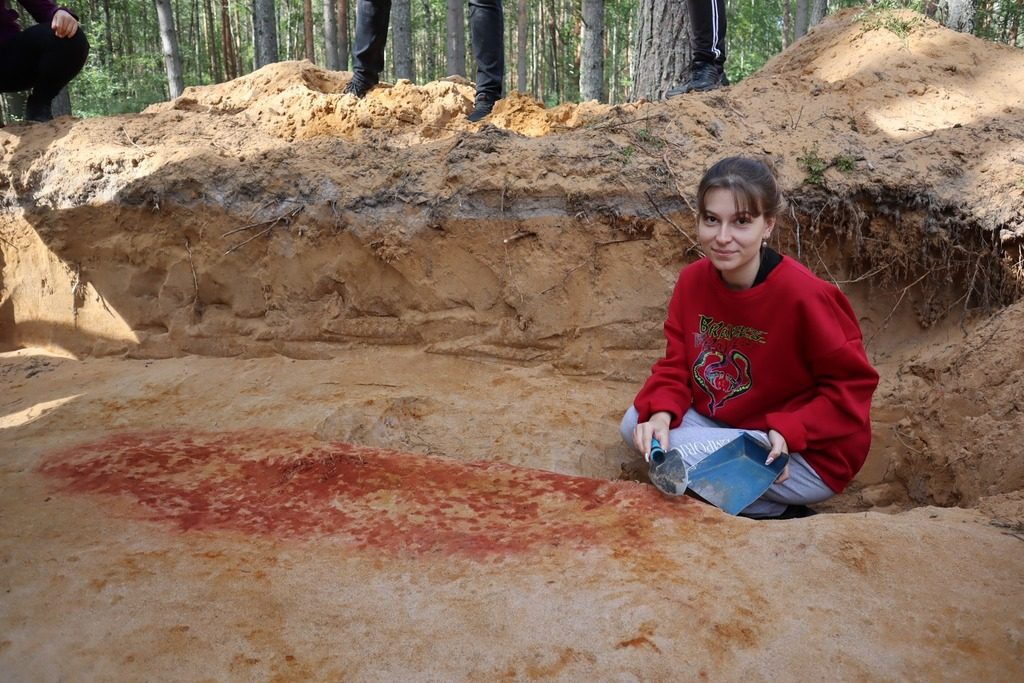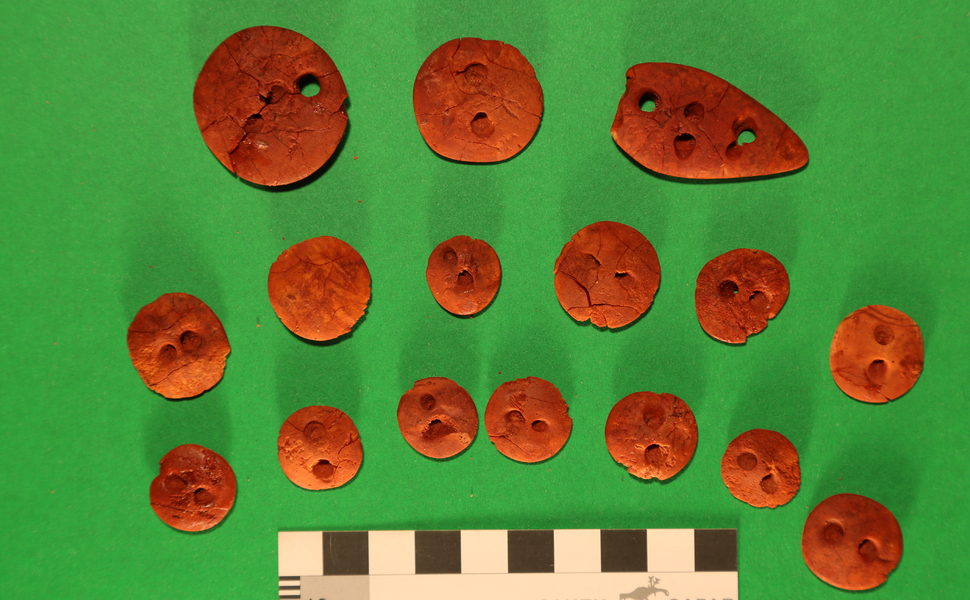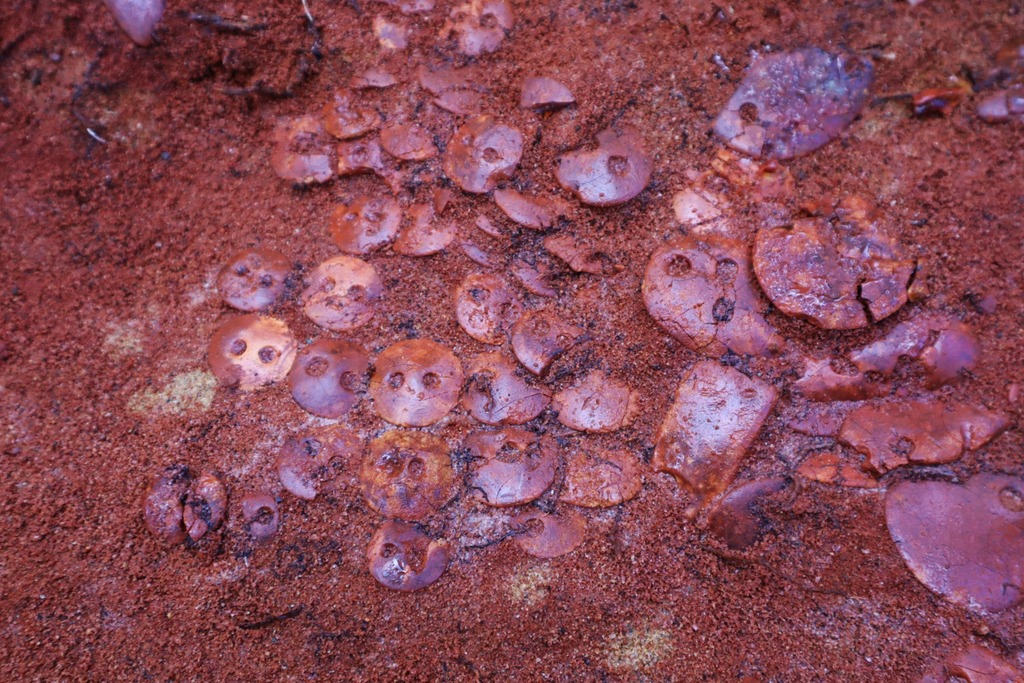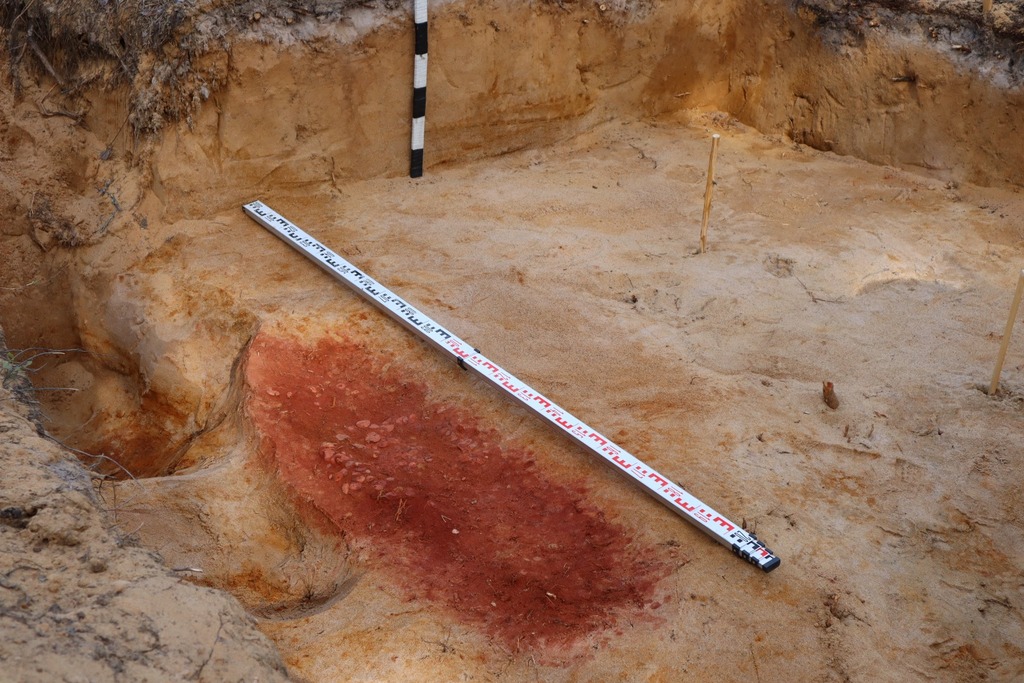Discovery of “unique” burial containing 140 pieces of amber jewellery

A team of archaeologists from Petrozavodsk State University in Russia have unearthed the burial site of a Copper Age “amber man” who was painted with ocher upon his death and laid to rest with more than 100 pieces of jewellery.
The expedition took place on the western shore of Lake Onega, the second-largest lake in Europe, where archaeologist Alexander Zhulnikov led a team of students on the dig, according to a press release issued by the university.

The students discovered what a research paper describes as a “unique burial” surrounded by amber jewellery and flint objects.
Inside the narrow chamber, the man was painted with ocher, a red pigment often used to mark a grave so it wouldn’t be disturbed, and surrounded by about 140 pieces of amber jewellery from the Baltic region.
The man buried in the chamber was almost certainly of high social standing and may have been a trader himself from the Eastern Baltic States.
The objects included pendants, discs, and amber buttons “arranged in rows face down” and sewn onto a covering made of leather and placed over the body.
Another two tiers of amber buttons were found along the edges of the small grave.

The flint chips found are likely from tools placed over the body and “are clearly so-called votive items—offerings apparently symbolizing whole knives and arrowheads,” researchers said in their paper.
The unique aspect of this particular burial, they said, is that it is an individual grave.
Other burials dating to the Mesolithic era and found in the forest belt of Europe are large cemeteries.
Burials with such a large number of jewels were previously unheard of in this area of Karelia, nor have they been uncovered in nearby northwestern regions.

Flint deposits are also unknown in the region, indicating that ancient people must have obtained them through the exchange.
In a statement, Zhulnikov said the discovery “testifies to the strong ties of the ancient population of Karelia with the tribes that lived on the southern coast of the Baltic Sea” and to the “formation of the so-called ‘prestigious’ primitive economy” among those living in Northern Europe, where high-value objects like jewellery and tools helped create and maintain social hierarchies.





